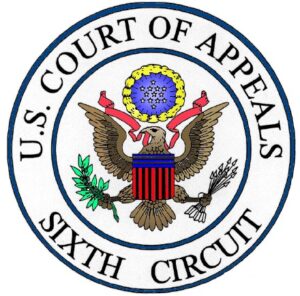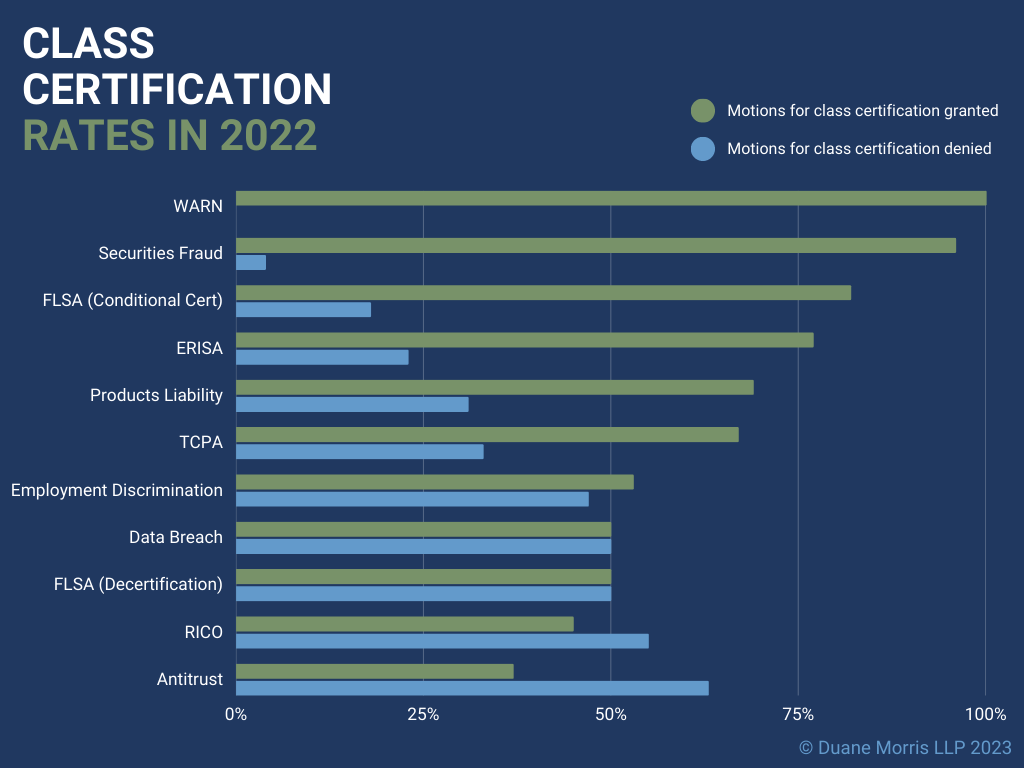 By Gerald L. Maatman, Jr., Emilee N. Crowther, and Nicolette J. Zulli
By Gerald L. Maatman, Jr., Emilee N. Crowther, and Nicolette J. Zulli
Duane Morris Takeaways: In Levine v. Vitamin Cottage Natural Food Markets, Inc., No. 20-CV-00261, 2023 U.S. Dist. LEXIS 92027 (D. Colo. May 25, 2023), Magistrate Judge Scott T. Varholak of the U.S. District Court for the District of Colorado granted Defendant Vitamin Cottage Natural Food Markets, Inc.’s (“Vitamin Cottage”) Motion to Decertify Plaintiff’s FLSA collective action, and denied Plaintiff’s Motion for Rule 23 Class Certification. The Court’s decision in this case aptly illustrates the standards under which courts should analyze, and defendants should move, for decertification of FLSA collective actions, as well as the standards for certification of a Rule 23 class in wage & hour misclassification lawsuits. This opinion is well-worth a read by corporate counsel, as it underscores the importance of well-planned and strategic discovery in defending class and collective actions in the context of an exemption misclassification case. Furthermore, it also demonstrates the contingent relationship and outcome of concurrently filed motions to for decertification brought by defendants and motions for Rule 23 class certification brought by plaintiffs.
Case Background
Vitamin Cottage owns and operates more than 150 grocery stores in nineteen states, and employs over 3,000 individuals. Plaintiff, a former Assistant Store Manager (“ASM”) in Colorado, filed suit under the Fair Labor Standards Act (“FLSA”) and Colorado Wage Claim Act (“CWCA”) alleging improper classification of ASMs as exempt employees and denying them overtime.
In November 2020, the Court granted Plaintiff’s Motion for Conditional Certification and conditionally certified a collective action for the purposes of Plaintiff’s FLSA claims. In total, one-hundred fifty-eight (158) individuals opted-in to the collective action against Vitamin Cottage. Thereafter, Plaintiff and Vitamin Cottage conducted written discovery and depositions.
After the close of discovery, Vitamin Cottage filed a Motion to Decertify the conditionally certified collective action on the grounds that the opt-ins and Plaintiff were not similarly situated. Two months later, Plaintiff filed a Motion to for Class Certification, seeking to certify a Rule 23(b)(3) class of ASMs for the purpose of Plaintiff’s state law claims.
The Court ultimately granted Vitamin Cottage’s Motion to Decertify, and denied Plaintiff’s Motion for Class Certification.
The Court’s Decision On The Motion For Decertification
In granting Vitamin Cottage’s Motion for decertification, the Court emphasized that its review at the post-discovery decertification stage of whether workers “are similarly situated” under the FLSA is “strict.” Id. at *5. The Court evaluated the following factors in its strict “similarly situated” analysis: “(1) the disparate factual and employment settings of the individual plaintiffs; (2) the various defenses available to defendant which appear to be individual to each plaintiff; and (3) fairness and procedural considerations.” Id. at *5; see also Thiessen v. Gen. Elec. Capital Corp., 267 F.3d 1095, 1102-05 (10th Cir. 2001) (known as the Thiessen factors).
As the basis of the suit was a misclassification claim, for the first factor, the Court conducted “a fact-intensive inquiry into the daily activities of each individual plaintiff in order to adequately identify the actual scope of Plaintiffs’ job duties to determine the extent and consequences of any disparities among them.” Id. at *10 (quoting Green v. Harbor Freight Tools USA, Inc., 888 F.Supp. 2d 1088, 1099 (D. Kan. 2012)). After noting that FLSA claims are permitted to proceed collectively “when disparities among the opt-in plaintiffs are ‘not material’ and are ‘outweighed by the similarities between those Plaintiffs,’” the Court held that the discovery responses and deposition testimony established “material disparities” that weighed against the matter “proceeding collectively.” Id. at *10-11.
While Plaintiffs argued that the disparities between the opt-ins were minor and non-material, and that the ASMs collectively spent the majority of their time on non-exempt tasks, the Court reiterated that “determining the exemption status of any given individual depends on all the facts in a particular case and demands an examination of the character of the employee’s job as a whole.” Id. at *18. Expanding on that general proposition, the Court noted “the amount of time spent performing exempt work . . . is not the sole test of whether an employee is exempt,” and analyzed the disparities that arose during discovery between potential collective members’ involvement in: (1) management (extent and type); (2) scheduling and task assignment; (3) managing and reporting store finances and performance; (4) ensuring store compliance with food safety regulations, including managing safety audits; (5) managing employee complaints and grievances; (6) directing the work of other employees; (7) hiring and firing employees. Id. at *11-16.
Ultimately, despite some uniformity (including a uniform job description, employment policies, and Vitamin Cottage’s uniform policy of classifying ASMs as non-exempt), the Court stressed that “the decertification analysis must turn on whether the [collective action] members were actually performing similar duties,” and where opt-ins “effectively disavow the job descriptions as not reflective of their day-to-day responsibilities,” opt-ins “may not rely on the job description itself as generalized evidence of the scope and similarity of their daily activities.” Id. at *20. As such, the Court held that the disparate factual and employment settings of the individual opt-in ASMs weighed in favor of decertification. Id. at *22.
The Court also found that the second factor weighed in favor of decertification, as the application of the defenses denied on each Plaintiff’s specific job duties, and Plaintiffs failed to establish that they were “similarly situated.” Id. at *22-23. Finally, as to the third factor, “[b]ased on the material disparities within and among the opt-in’s discovery responses and deposition testimonies . . . individualized defenses and credibility concerns would result in at least dozens of the type of ‘mini-trials’ that undercut the efficacy and fairness of a collective action.” Id. at *24. Thus, for the same reasons as the Court found in considering the first and second factors, the Court found that the fairness and procedural considerations weighed against proceeding collectively, and granted Vitamin Cottage’s Motion to for decertification. Id.
The Court’s Decision On The Motion For Rule 23 Class Certification
In denying Plaintiff’s Rule 23(b)(3) Motion for class certification, the Court conducted a “rigorous analysis” under both Rule 23(a) and 23(b)(3), relying, in large part, on its findings in granting Vitamin Cottage’s Motion for decertification of Plaintiff’s FLSA claim. For starters, the Court cited the seminal ruling of Walmart Stores, Inc. v. Dukes, 564 U.S. 338, 350 (2011).
Here, Plaintiff sought to certify a class for his unpaid overtime claim under CWCA. The Court noted that relevant state exemptions are similar, but not identical, to the FLSA exemptions discussed in the context of a Motion for decertification, and therefore required a separate, fact-intensive inquiry into the daily activities of an employee.
In considering the issue of commonality under Rule 23(a) together with the requirement of predominance under Rule 23(b)(3), the Court focused on whether the questions of law or fact common to class members predominated over any questions affecting only individual members, such that a class action would be superior to other available methods for fairly and efficiently resolving the controversy.
The Court held that while Vitamin Cottage’s uniform exemption policy showed that it considered the employees to be similar to at least some degree, a blanket exemption policy does not eliminate the need to make a factual determination as to whether class members are actually performing similar duties in the context of a misclassification claim.
Relying primarily on the briefing and exhibits associated with the Motion for decertification and the executive exemption as an illustration, the Court likewise found there were disparities in putative class members’ “supervisory” duties and hiring and firing authority.
In discussing the final element of the executive exemption, the Court noted an important difference between the Colorado executive exemption and the FLSA executive exemption: Whereas time spent performing exempt duties is not a dispositive element under the FLSA exemption, the Colorado executive exemption expressly requires the employees spend a minimum of 50% of the workweek in duties directly related to the supervision in order to qualify as exempt. Based on the evidence (i.e., deposition testimony and written discovery), the Court held there were plainly material disparities among the class members regarding the degree to which their day-to-day duties as ASMs involved supervisory or management-related objectives.
The Court reasoned that these material disparities went to the heart of liability in this matter – whether the class members were classified properly. And for that reason, the question of exemption was not capable of class-wide resolution. It further opined that due to the centrality of this question in the context of this case, whether other issues in the matter were capable of producing class-wide answers did not matter, as those issues did not predominate over the individualized question of whether each ASM was properly classified under Colorado law.
Ultimately, the Court held that for the same reasons it granted Vitamin Cottage’s Motion for decertification, Plaintiff did not meet his Rule 23 burden by relying on Vitamin Cottage’s common policies and procedures or uniform job description for ASMs.
Implications For Employers
The decision in Levine precisely delineates the standards for decertification of FLSA actions and certification of state law corollary class action claims. It also highlights the symbiotic nature of its analysis of these actions in the misclassification context and the important role that discovery plays in driving the outcome.
The Levine decision provides helpful guidance for employers that general uniform policies and procedures, such as the exemption policy analyzed by the Court in this case, are not enough to show that putative class or collective action members are actually performing similar duties. In order to withstand the Court’s “rigorous analysis,” an employer’s written discovery, such as interrogatory answers, and deposition testimony of putative class or collective action members must reflect that the specific duties and responsibilities of the putative class or collective action members at issue are uniform across-the-board.
 By Gerald L. Maatman, Jr. and Jennifer A. Riley
By Gerald L. Maatman, Jr. and Jennifer A. Riley










